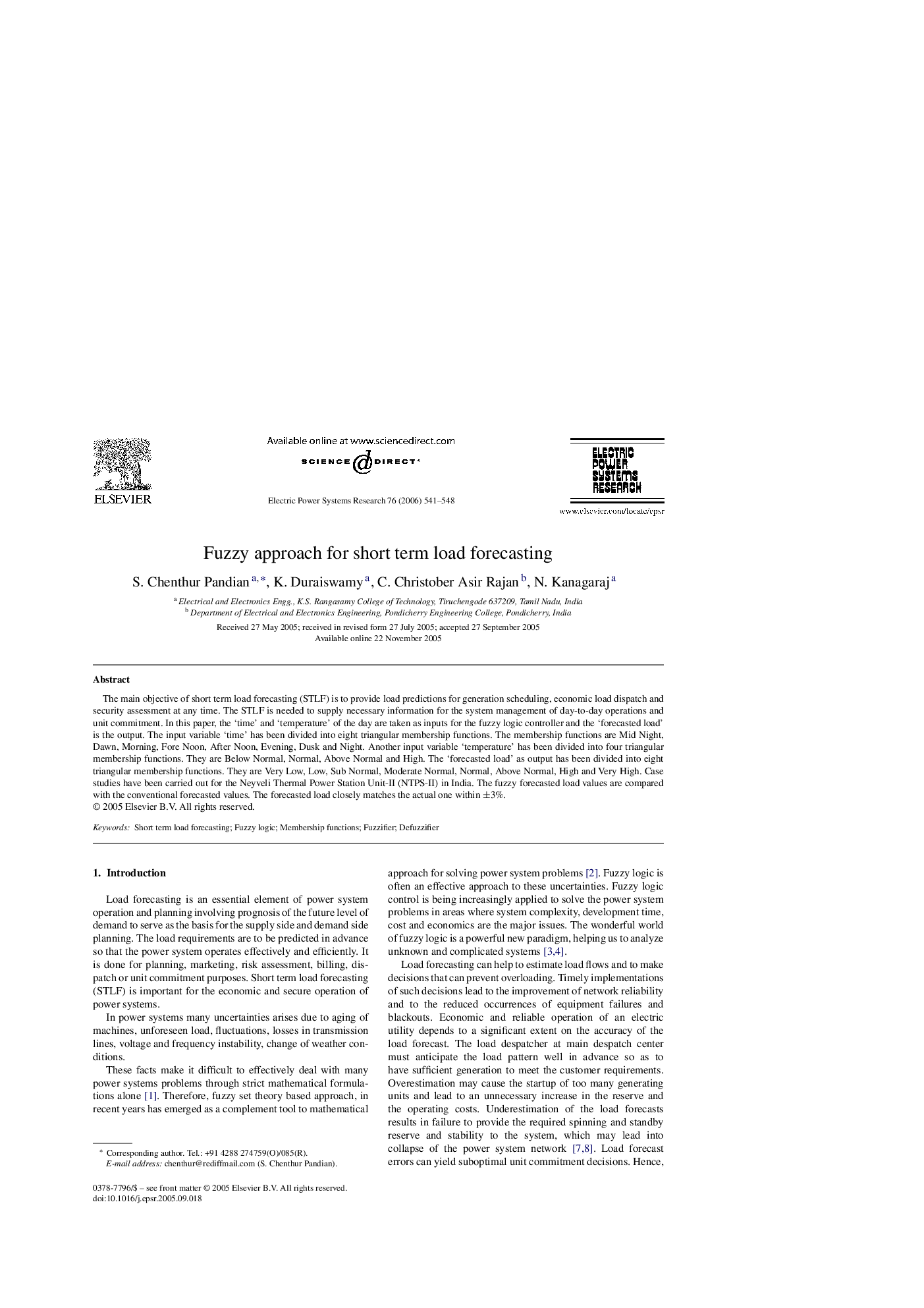| Article ID | Journal | Published Year | Pages | File Type |
|---|---|---|---|---|
| 705978 | Electric Power Systems Research | 2006 | 8 Pages |
The main objective of short term load forecasting (STLF) is to provide load predictions for generation scheduling, economic load dispatch and security assessment at any time. The STLF is needed to supply necessary information for the system management of day-to-day operations and unit commitment. In this paper, the ‘time’ and ‘temperature’ of the day are taken as inputs for the fuzzy logic controller and the ‘forecasted load’ is the output. The input variable ‘time’ has been divided into eight triangular membership functions. The membership functions are Mid Night, Dawn, Morning, Fore Noon, After Noon, Evening, Dusk and Night. Another input variable ‘temperature’ has been divided into four triangular membership functions. They are Below Normal, Normal, Above Normal and High. The ‘forecasted load’ as output has been divided into eight triangular membership functions. They are Very Low, Low, Sub Normal, Moderate Normal, Normal, Above Normal, High and Very High. Case studies have been carried out for the Neyveli Thermal Power Station Unit-II (NTPS-II) in India. The fuzzy forecasted load values are compared with the conventional forecasted values. The forecasted load closely matches the actual one within ±3%.
